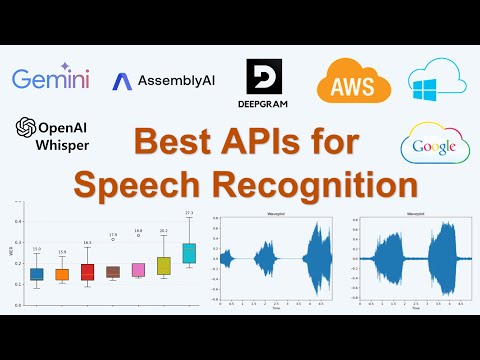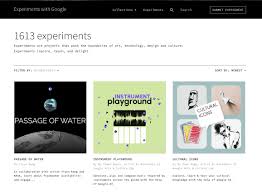
Revolutionizing Education with Google: Empowering Learners through Innovative Tools and Resources
Unlocking the Power of Google Education
In today’s digital era, technology has revolutionized the way we learn and teach. One platform that has become synonymous with educational innovation is Google Education. With its suite of powerful tools and resources, Google Education has transformed classrooms around the world, empowering both educators and students alike.
The Benefits of Google Education
Google Education offers a wide range of benefits that enhance the learning experience for students and streamline administrative tasks for educators. Let’s explore some of these key advantages:
Collaboration Made Easy
One of the standout features of Google Education is its emphasis on collaboration. With tools like Google Docs, Sheets, and Slides, students can work together in real-time on projects, fostering teamwork and enhancing their problem-solving skills. Educators can also provide feedback directly within these documents, encouraging continuous improvement.
Organization and Productivity
Google Classroom serves as a central hub for teachers to create assignments, distribute resources, and communicate with their students. It simplifies administrative tasks by streamlining workflows, enabling teachers to spend more time focusing on instruction rather than paperwork. Students can easily access assignments, submit completed work digitally, and receive timely feedback from their teachers.
Access to a Wealth of Information
With Google Search at their fingertips, students have access to an extensive database of information that can enhance their learning experience. They can conduct research efficiently and effectively while developing critical thinking skills in evaluating sources for credibility and relevance.
Engaging Multimedia Tools
Google Education offers a range of multimedia tools that make learning interactive and engaging. From creating presentations with Google Slides to designing websites using Google Sites, students can showcase their knowledge in creative ways while developing digital literacy skills.
Empowering Educators
Google Education not only benefits students but also empowers educators to enhance their teaching practices:
Professional Development Opportunities
Google provides educators with access to professional development resources, including online courses and certifications. These opportunities enable teachers to acquire new skills, explore innovative teaching methods, and stay up-to-date with the latest educational trends.
Data-Driven Insights
Google Education offers powerful analytics tools that allow educators to gain insights into student performance and engagement. By analyzing data, teachers can identify areas where students may need additional support and tailor their instruction accordingly.
Global Collaboration
Through Google’s global network of educators, teachers can connect and collaborate with colleagues from around the world. This fosters a sense of community and enables the sharing of best practices, ultimately benefiting both educators and students.
The Future of Learning
In an increasingly digital world, Google Education continues to pave the way for transformative learning experiences. By harnessing the power of technology, it equips students with essential skills for success in the 21st century while empowering educators to innovate in their teaching methodologies.
As we embrace the possibilities offered by Google Education, we open doors to endless opportunities for growth, collaboration, and knowledge sharing. Together, let’s unlock the full potential of education through Google’s innovative tools and resources.
Maximizing Educational Outcomes: The Top 5 Benefits of Google Education for Collaboration, Workflow, and Professional Growth
- Enhanced collaboration
- Streamlined workflow
- Access to vast information
- Engaging multimedia tools
- Professional development opportunities
Seven Drawbacks of Google Education: Navigating Privacy, Connectivity, and Accessibility Challenges
- Data Privacy Concerns
- Dependence on Internet Connectivity
- Learning Curve for Educators
- Limited Offline Access
- Potential Distractions
- Inequality in Access
- Reliance on a Single Platform
Enhanced collaboration
One of the standout advantages of Google Education is its ability to enhance collaboration among students. With features like real-time editing and commenting in tools such as Google Docs, Sheets, and Slides, students can seamlessly work together on projects, fostering teamwork and encouraging the development of essential collaboration skills. This collaborative environment not only promotes a sense of shared responsibility but also enables students to learn from one another, exchange ideas, and collectively solve problems. By facilitating real-time collaboration, Google Education empowers students to work together effectively and prepares them for the collaborative nature of the modern workforce.
Streamlined workflow
Google Education’s streamlined workflow is a game-changer for teachers. With the help of Google Classroom, educators can effortlessly create assignments, distribute resources, and provide feedback to students. This not only saves valuable time but also simplifies administrative tasks, allowing teachers to focus more on delivering quality instruction and engaging with their students. By eliminating the need for manual paperwork and streamlining the entire process, Google Education empowers teachers to be more efficient and effective in managing their classrooms, ultimately enhancing the overall learning experience for students.
Access to vast information
One of the significant advantages of Google Education is the access it provides to a vast amount of information through Google Search. Students can explore a wide range of topics and subjects, enabling them to deepen their understanding and broaden their knowledge base. This access to a wealth of information not only enriches their learning experience but also encourages the development of critical thinking skills. By evaluating and analyzing various sources, students can become adept at discerning reliable and relevant information, empowering them to make informed decisions and think critically about the world around them.
Engaging multimedia tools
Google Education provides a valuable pro with its engaging multimedia tools. These tools empower students to go beyond traditional methods of presenting their knowledge and instead explore creative ways to showcase their understanding. By utilizing tools like Google Slides, students can design visually appealing presentations that capture their audience’s attention. This not only enhances their communication skills but also fosters the development of digital literacy as they navigate and utilize various multimedia elements. With Google Education, students can unleash their creativity while acquiring essential skills for the digital age.
Professional development opportunities
Google Education offers a significant advantage to educators through its provision of professional development opportunities. With access to a wide range of resources and certifications, Google empowers teachers to continuously enhance their teaching practices and stay updated with the latest educational trends. By engaging in professional development offered by Google, educators can acquire new skills, explore innovative teaching methods, and expand their knowledge base. This commitment to ongoing learning ensures that teachers are equipped with the tools they need to provide high-quality education and adapt to the evolving needs of their students effectively.
Data Privacy Concerns
One significant concern associated with Google Education is the issue of data privacy. While the platform offers numerous benefits, there are valid concerns about the collection and storage of student data by Google. The use of Google Education may involve the sharing of personal information, which raises questions about how this data is handled and protected. It is essential for educational institutions and Google to prioritize robust security measures and transparent policies to ensure the privacy of student data, addressing these concerns head-on.
Dependence on Internet Connectivity
One notable drawback of Google Education is its dependence on internet connectivity. While the platform offers a multitude of powerful tools and resources, its effectiveness is hindered in areas with limited or unreliable access to the internet. This can pose a significant challenge for both educators and students who rely on Google Education for their learning activities. Without a stable internet connection, accessing assignments, collaborating on projects, and utilizing online resources becomes difficult, if not impossible. This dependence on internet connectivity highlights the need for equitable access to reliable internet infrastructure to ensure that all students have equal opportunities to benefit from Google Education’s offerings.
Learning Curve for Educators
One potential drawback of Google Education is the learning curve it presents for educators. Implementing Google Education tools may require teachers to undergo training and familiarize themselves with new technology, which can be time-consuming and challenging for some educators. Adapting to these tools and incorporating them effectively into their teaching methods may initially require additional time and effort. However, with the right support and resources, educators can overcome this hurdle and harness the full potential of Google Education to enhance their teaching practices and empower their students.
Limited Offline Access
While Google Education offers a plethora of benefits, one drawback is the limited offline access it provides. Without an internet connection, certain features and resources may become inaccessible, hindering students’ ability to work on assignments or access materials offline. This limitation can pose challenges for students who may not have consistent internet access or need to work in environments where connectivity is unreliable. It is important for educators and students to be aware of this constraint and explore alternative solutions or offline options when necessary to ensure continuous learning opportunities.
Potential Distractions
One potential drawback of Google Education is the risk of potential distractions. While collaboration is encouraged and can greatly enhance the learning experience, there is a possibility that students may get sidetracked by non-educational content or engage in off-topic discussions within the collaborative platforms. This can divert their attention away from the intended educational objectives and hinder their overall focus and productivity. It is important for educators to establish clear guidelines and foster a supportive learning environment to minimize these distractions and ensure that students stay on track with their educational goals.
Inequality in Access
One significant con of Google Education is the issue of inequality in access. Unfortunately, not all students have equal access to devices or reliable internet connections at home, creating disparities in their ability to fully participate in online learning through Google Education. This digital divide can further widen the educational gap between students from different socioeconomic backgrounds. While Google Education provides valuable resources and tools, it is essential to address this issue and ensure that every student has equitable access to technology and the internet, enabling them to benefit fully from the opportunities provided by online learning platforms.
Reliance on a Single Platform
One potential drawback of Google Education is the reliance on a single platform for various educational needs. While Google offers a robust suite of tools and resources, depending solely on one platform leaves educators and students vulnerable to any technical issues or disruptions that may arise. If the platform experiences downtime or encounters technical difficulties, it could have a significant impact on teaching and learning activities, potentially disrupting the flow of instruction and hindering student progress. It is essential for schools and educators to have contingency plans in place to mitigate the risks associated with relying heavily on a single platform.


